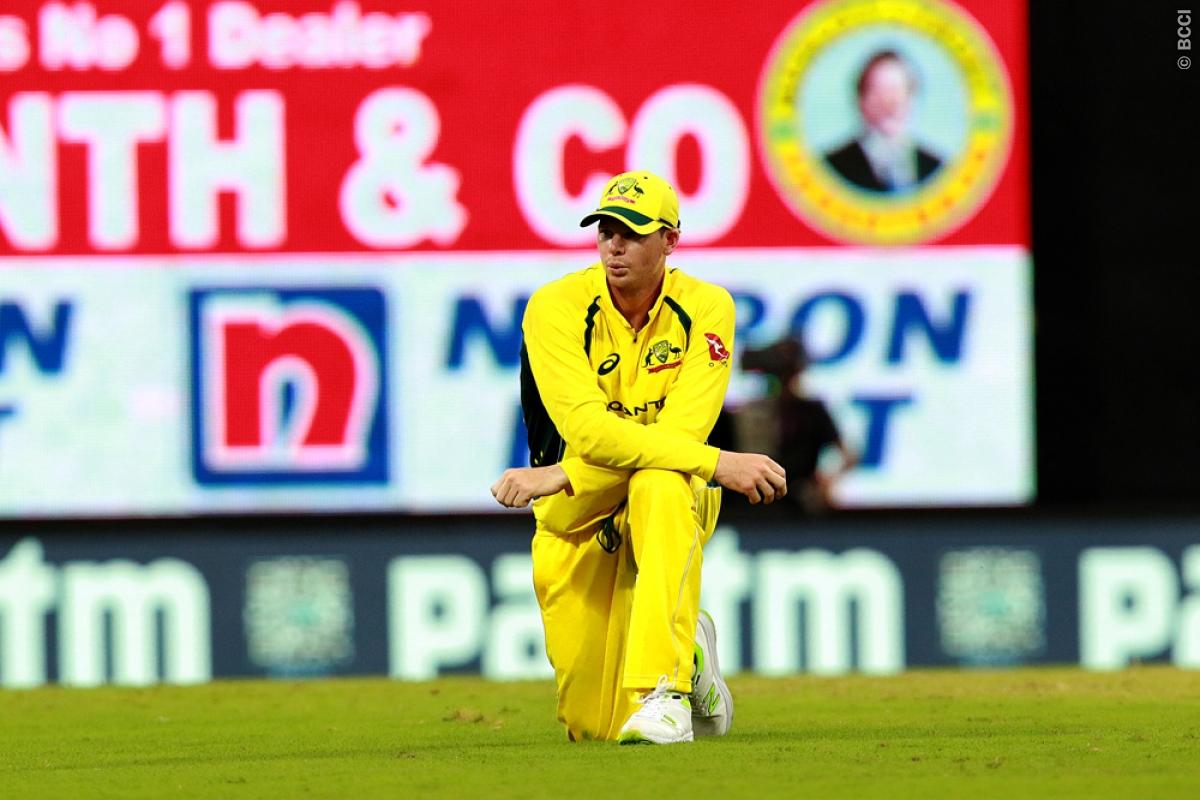Steve Smith’s T20 recall - less of a boon, more of a bane

When news broke out that Australia had handed Steve Smith a T20 recall after three long years, I was disappointed. For the first time in over five years, for once, I was not looking forward to watching Steve Smith bat.
Not in the literal sense, I would still probably be the first person to switch on the television and tune into the match as soon as Smith walks in to bat. But the raging question is - how does this move benefit either party, exactly? On one hand, you have a player, who, by his own words, was “mentally cooked” after a long and exhausting summer gearing to burden further workload. On the other, you have a desperate team that has now gone to its last resort - that of recalling Smith - despite knowing that the player is capable of only delivering so much in the game’s shortest format.
It is no secret that T20 cricket is Smith’s weakest format. His game revolves around solidity and hence more often than not, the value Smith brings to the side is judged by the players who surround him, rather than his own ability with the bat. A good example of this is his recent stints in GT20 Canada, CPL and the IPL in the past 18 months, where he combinedly averaged a healthy 33.55, but could only get those runs at a strike rate of 119, which, even for a sheet anchor, is extremely low in modern-day cricket.
His inability to clear the ropes at will means that the value he brings to the side reduces ten folds the moment the team gets off to a good start, meaning he gets pushed down the order, a scenario that occurred one too many times in the World Cup. While this can be masked in one-day cricket, in T20s, unfortunately, there is no hiding.
Take the first T20I against Sri Lanka for example, after the openers put on 122 runs for the first wicket, Australia had to resort to sending someone like a Glenn Maxwell or an Ashton Turner in next to maximize the score, and while flexibility in the batting order is healthy, Smith’s limitations with the bat instantly handicaps the team. Of course, this is a scenario that is bound to occur not too often, but when it does, it instantly zips back the score whilst also exposing Smith’s frailties, a scenario that is anything but ideal for both the player and the team.
Thanks to him being an extremely slow starter, there is also the added risk of the team completely losing out on the momentum built by the openers should he come in around say the fifth or the sixth over. According to CricViz, Smith has scored roughly an average of 21 runs in the first 20 balls he’s faced in T20 cricket in the last two years, which is the slowest amongst the current Australian batsmen.
With Smith being a liability batting at the death and with his ‘safe’ approach stalling the flow up-front, it leaves us with just one scenario where he’ll be of utmost use to the team - a top-order collapse. Yes, there is no other batter other than Smith who you’d want in the middle when your team is 20/3 but is it worth sacrificing 30 extra runs in each match just to be well prepared for the ultimate doomsday? Perhaps not.
So, despite it being clearly evident that Smith is not a ‘match-winner’ in T20s, why did Australia resort to picking him once again? Well, it turns out that other than players not named Glenn Maxwell, Smith has ironically been Australia’s best middle-order batsman in T20 Cricket since the start of 2015.

 Performance of Australia's #3 and #4 batsmen since January 1, 2015 © ESPN Cricinfo
Performance of Australia's #3 and #4 batsmen since January 1, 2015 © ESPN CricinfoA telling, alarming statistic, which sheds light on the inability of the Big Bash League (BBL) to churn out quality batsmen. Since Smith’s last T20I appearance prior to the first T20I against Sri Lanka, there have been three full seasons of BBL that has come and passed and yet, the best Australia could do at this point in time is to go back to Smith, who, with all due respect, as attested above, is by no means a ‘very good’ T20 batsman.
From Travis Head to Chris Lynn to Mitchell Marsh to Marcus Stoinis to Ben Dunk, every single ‘BBL star’ has been found out at the elite level of T20 cricket in one way or the other, meaning the selectors had to instantly shut down thoughts of recalling them back to the team thanks to their corroded past.
The middle-order batters who have actually done well - Callum Ferguson and Michael Klinger - unfortunately find themselves in the wrong side of the thirties and the other standout performers - Matthew Wade, D’Arcy Short, Jake Weatherald - are all openers, meaning there’s no place for them in the team thanks to Warner and Finch being automatic picks.
Perhaps it’s time for Cricket Australia to sit down, think and re-evaluate the purpose that BBL is serving, whether they want it to be a pathway for the players to break into the national team, a breeding ground for the next generation of T20 cricketers or a mere spectacle for the general audience to tune into.
Smith’s recall is by no means a mistake, for he is still a great batsman who adds a lot of value to the team, but the fact that Australia ended up taking this route in the first place speaks volumes about the flaws in their domestic structure. A bigger problem looms in the background and if not looked into, could very well become catastrophic for the Kangaroos in the long run.

Comments
Sign up or log in to your account to leave comments and reactions
0 Comments